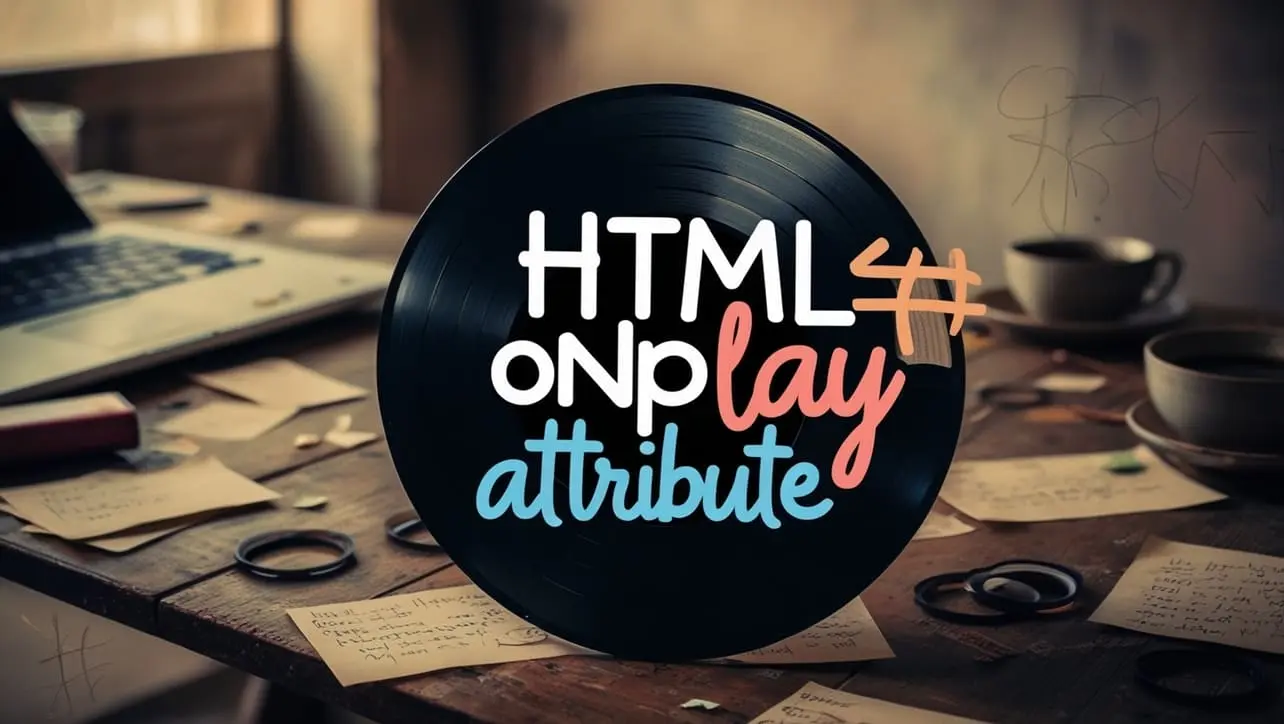
HTML Topics
- HTML Intro
- HTML Basic
- HTML Editors
- HTML CSS
- HTML Tags
- HTML Deprecated Tags
- HTML Events
- HTML Event Attributes
- HTML Global Attributes
- HTML Attributes
- abbr
- accept
- accept-charset
- accesskey
- action
- align
- alt
- archive
- as
- async
- autocapitalize
- autocomplete
- autofocus
- autoplay
- axis
- bgcolor
- border
- cellpadding
- cellspacing
- char
- charoff
- charset
- checked
- cite
- class
- classid
- codebase
- codetype
- color
- cols
- colspan
- compact
- content
- contenteditable
- controls
- coords
- crossorigin
- data
- data-*
- datetime
- declare
- default
- defer
- dir
- dirname
- disabled
- download
- draggable
- enctype
- enterkeyhint
- for
- form
- formaction
- formenctype
- formmethod
- formnovalidate
- formtarget
- frame
- frameborder
- frameset
- headers
- height
- hidden
- high
- href
- hreflang
- hspace
- http-equiv
- id
- inert
- inputmode
- ismap
- kind
- label
- lang
- list
- loop
- low
- max
- maxlength
- media
- method
- min
- multiple
- muted
- name
- novalidate
- onabort
- onafterprint
- onbeforeprint
- onbeforeunload
- onblur
- oncanplay
- oncanplaythrough
- onchange
- onclick
- oncontextmenu
- oncopy
- oncuechange
- oncut
- ondblclick
- ondrag
- ondragend
- ondragenter
- ondragleave
- ondragover
- ondragstart
- ondrop
- ondurationchange
- onemptied
- onended
- onerror
- onfocus
- onhashchange
- oninput
- oninvalid
- onkeydown
- onkeypress
- onkeyup
- onload
- onloadeddata
- onloadedmetadata
- onloadstart
- onmousedown
- onmousemove
- onmouseout
- onmouseover
- onmouseup
- onmousewheel
- onoffline
- ononline
- onpagehide
- onpageshow
- onpaste
- onpause
- onplay
- onplaying
- onpopstate
- onprogress
- onratechange
- onreset
- onresize
- onscroll
- onsearch
- onseeked
- onseeking
- onselect
- onstalled
- onstorage
- onsubmit
- onsuspend
- ontimeupdate
- ontoggle
- onunload
- onvolumechange
- onwaiting
- onwheel
- open
- optimum
- pattern
- placeholder
- popover
- popovertarget
- popovertargetaction
- poster
- preload
- readonly
- rel
- required
- reversed
- rows
- rowspan
- sandbox
- scope
- selected
- shape
- size
- sizes
- span
- spellcheck
- src
- srcdoc
- srclang
- srcset
- start
- step
- style
- tabindex
- target
- title
- translate
- type
- usemap
- value
- width
- wrap
- HTML Comments
- HTML Entity
- HTML Head
- HTML Form
- HTML IndexedDB
- HTML Drag & Drop
- HTML Geolocation
- HTML Canvas
- HTML Status Code
- HTML Language Code
- HTML Country Code
- HTML Charset
- MIME Types
HTML onplay Attribute

Photo Credit to CodeToFun
🙋 Introduction
The onplay attribute is a crucial element in HTML that allows developers to execute JavaScript code when the media playback of an audio or video element starts.
This attribute provides a way to trigger specific actions or events at the onset of media playback, enhancing the interactivity and user experience of web applications.
🎯 Purpose of onplay
The primary purpose of the onplay attribute is to define a JavaScript function or script that should be executed when the media associated with the audio or video element begins playing.
This enables developers to create dynamic and responsive applications by responding to events during media playback.
💎 Values
The onplay attribute accepts JavaScript code or function names as values.
It allows developers to specify the actions to be taken when the play event occurs. Here's a simple example:
<audio controls onplay="startPlayback()">
<source src="audio.mp3" type="audio/mp3">
Your browser does not support the audio tag.
</audio>
<script>
function startPlayback() {
console.log("Media playback has started!");
// Additional actions can be added here
}
</script>🧠 How it Works
In this example, the onplay attribute is set to call the startPlayback function when the audio playback begins.
🔄 Dynamic Values with JavaScript
Similar to other event attributes, the onplay attribute can be dynamically modified using JavaScript.
This flexibility allows developers to change the behavior of the onplay event based on user interactions or specific conditions. Here's an example:
<script>
function changePlayEvent() {
document.getElementById("myAudio").onplay = function() {
console.log("Custom onplay event triggered!");
// Additional actions can be added here
};
}
</script>
<audio controls id="myAudio" src="audio.mp3">
Your browser does not support the audio tag.
</audio>
<button onclick="changePlayEvent()">Change onplay Event</button>🧠 How it Works
In this script, clicking the button with the changePlayEvent function will dynamically change the onplay event to a custom function when the audio playback starts.
🏆 Best Practices
- Use the
onplayattribute to enhance user interaction and responsiveness during media playback. - Keep the JavaScript code concise and focused on the specific actions you want to perform when the media starts playing.
- Test your implementation across different browsers to ensure consistent behavior.
🎉 Conclusion
The onplay attribute is a valuable tool for developers working with media elements in HTML.
By leveraging this attribute, you can create engaging and dynamic web applications that respond intelligently to the initiation of media playback.
👨💻 Join our Community:
Author

For over eight years, I worked as a full-stack web developer. Now, I have chosen my profession as a full-time blogger at codetofun.com.
Buy me a coffee to make codetofun.com free for everyone.
Buy me a Coffee












If you have any doubts regarding this article (HTML onplay Attribute), please comment here. I will help you immediately.